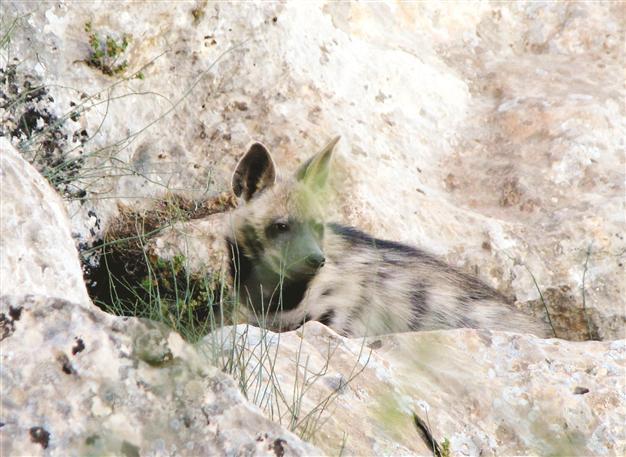Fatal incident to expedite efforts to save leopards
İZMİR - Anadolu Agency

Nongovernmental organizations launched a new public-awareness campaign at schools, cafes and houses to convince villagers that the big cats need to be protected rather than shot on sight. AA photo
The death of a 10th leopard in Anatolia in the last 10 years has mobilized nongovernmental organizations to launch a new public-awareness campaign at schools, cafes and houses to convince villagers that the big cats need to be protected rather than shot on sight.
On Nov. 3, an Anatolian leopard was killed by a shepherd in the southeastern province of Diyarbakır after the feline jumped on him as he was grazing his cattle. Subsequent forensic reports showed that the animal had previously been seen and shot in the foot. The incident drew attention back to a species long thought extinct within Turkey’s borders.
Leopards were said to have gone extinct in Turkey after one of the felines was killed in 1974 in the Ankara district of Beypazarı, according to Natural Culture and Life Association Chairman Turan Çetin.
However, leopards were seen in 2005 and 2008 in Bitlis, in 2010 in Siirt and four days ago in Diyarbakır’s Çınar district, proving that the animals continue to survive in Anatolia, he said.
At the same time, he said the felines were likely to be killed off by shepherds soon if measures were not taken.
“Projects for leopards were accelerated in 2010 after an incident that happened in 2010 on Gabar Mountain. We started a joint project with the Association for the Protection of Natural Resources and Biological Variation. With the sponsorship of the United Nations and support of the National Parks Directorate, we are trying to determine the habitat areas of leopards first of all. In the first four months of the project, leopard news came from Diyarbakır. But this incident unfortunately ended with the bullet of a shepherd and death. This incident showed us the urgency of the project once again,” he said.
Çetin said they had heard of the existence of leopards especially in Bitlis, Siirt, Hakkari and Tunceli, as well as Diyabakır’s Çınar district, which is not a suitable habitat for a leopard. “The leopard most probably came from Bitlis to this region.”
He said they had discussions with citizens in mountain villages within the scope of the project, adding that incidents related by elderly people were very illuminating. “Despite many incidents in Bitlis and Siirt, we determined that people had not encountered such an animal before in Çınar.”
Çetin said the ministry would move to protect leopards after the determination of their habitats, adding that education programs would start for citizens and shepherds in the determined areas, initially through materials like brochures and posters.
The NGO head said people of the region were scared of leopards and that they defended themselves when they encountered the animal. “We will inform these people about leopards and their importance, and ask them to collaborate with us. We aim with this project to put an end to fatal incidents. We will benefit from another similar campaign in Şanlıurfa,” he said.
Not a monster but in need of protection Çetin said that thanks to the protection project carried out by the Nature Association in Şanlıurfa, hyenas are now living in five villages together with people.
“We have also had positive results for other endangered animals like gazelles, the bald ibis, desert snakes and scops owls. We will use the advantage of our experiences in the hyena project. Even though the ecosystem and behavior of both animals are different, people have common thoughts about these animals. They are scared of these two animals. We think that we will be successful in the project,” Çetin said.
Seeking to disabuse people of the notion that leopards were monsters, Çetin said the project aimed to inform people about the advantages of having the animals in the region. Classes will also be given in schools for children to protect leopards.
“A Friday sermon was [recently] given in Şanlıurfa on the protection of animals like hyenas, gazelles and desert snakes, and it was very useful. People’s view on these animals suddenly changed. We will do the same thing for leopards,” Çetin said.
